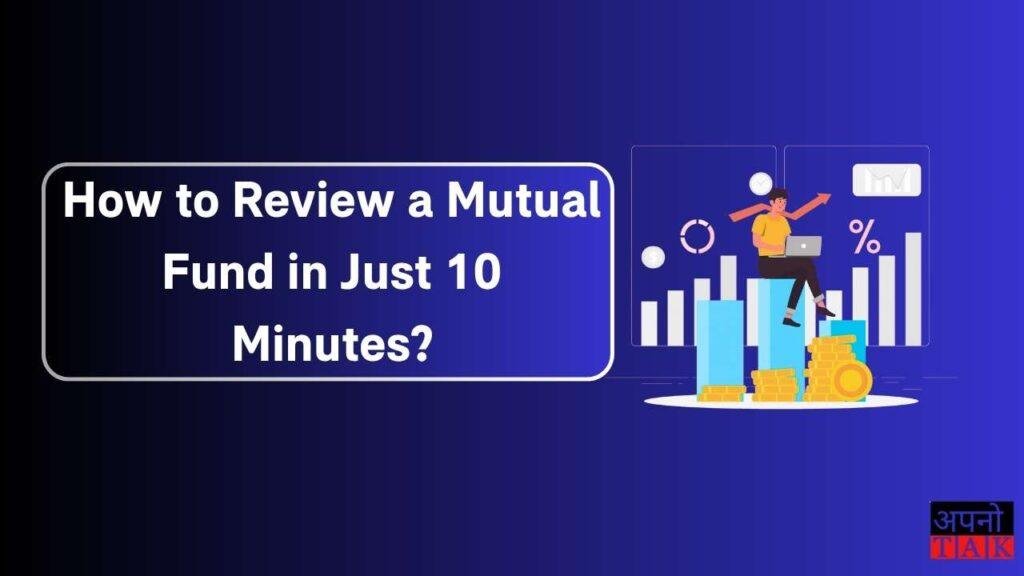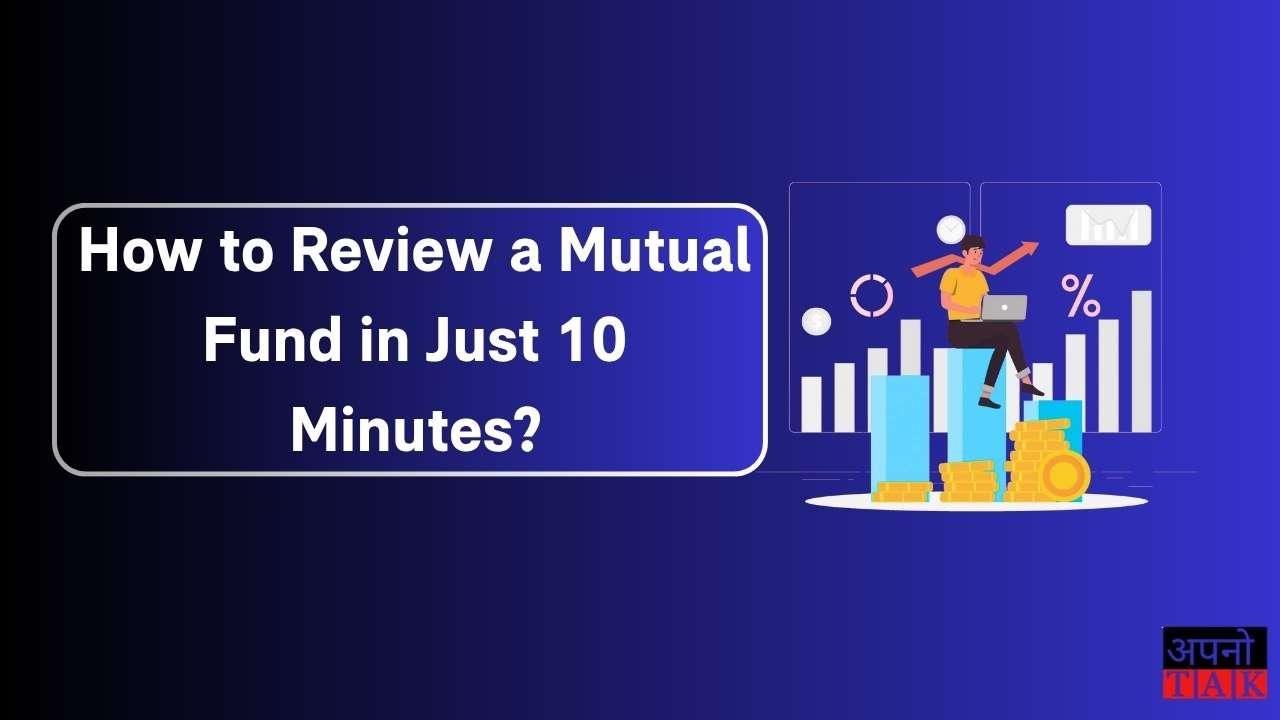Mutual fund investing is an excellent means of increasing your money, but picking the right one seems daunting. There are thousands of mutual funds to choose from, so how do you know which to select? The good news is, it doesn’t take you hours to analyze a mutual fund. Within 10 minutes, you can scan important details to make an intelligent choice. The following is a simple step-by-step process in this blog post to glance through a mutual fund in a quick and efficient manner. We shall use simple English so that anyone can understand, whether you are a first-time investor or a seasoned one.

How to Review a Mutual Fund in Just 10 Minutes?
Step 1: Check the Fund’s Objective and Type
Begin by knowing what the mutual fund is supposed to achieve. Each fund has an objective, such as increasing your money via stocks (equity funds), generating regular income via bonds (debt funds), or a combination of both (hybrid funds).
Have a look at the name of the fund or fact sheet that can be found on the fund company’s website or apps such as Groww or Moneycontrol. For instance, an “equity large-cap fund” invests in large, stable businesses, whereas a “small-cap fund” invests in small, risky businesses. Ensure the fund’s goal aligns with your requirement, such as retirement or short-term buying. Check if it’s an active fund (run by a professional) or a passive fund (following an index like Nifty 50). This process will only take you about 2 minutes and will give you an idea of whether the fund will suit your requirements.
Step 2: Evaluate Past Performance
Then, see how well the fund has performed historically. Check its returns for 1, 3, 5, and 10 years, if possible. You can get this information from the fund’s site or sites such as Morningstar or Value Research. Compare the returns with the fund’s benchmark (such as Nifty 50 for equity funds) and other similar funds in the same category.
For instance, if a large-cap fund returned 12% per annum but its benchmark returned 14%, it’s performing poorly. Remember that past performance is not a guarantee of future performance, but it indicates consistency. Also, see if the returns fit your risk appetite—equity funds can fluctuate more than debt funds. This requires 3 minutes and provides an idea of the fund’s performance history.
Step 3: Assess Risk and Volatility
All mutual funds involve some degree of risk, so you must see how risky it is. Check the fund’s riskometer (a pictorial measure in the fact sheet) to determine if it’s low, moderate, or high risk. For a better glance, look at the Standard Deviation (which indicates how much returns fluctuate) and Beta (which indicates how much the fund correlates with the market). Smaller numbers indicate lower volatility.
These are available on Value Research or the website of the fund. For instance, a 15% standard deviation indicates that the returns of the fund fluctuate more than one which has 10%. If you are a conservative investor, choose a fund with lower risk. This is a 2-minute step and will help you determine if the rise and fall of the fund are for you.
Step 4: Review Costs and Fees
Fees can nibble away at your profits, so look at the fund’s Expense Ratio, the annual fee imposed by the fund. It’ll be in the fact sheet or on investment websites. The lower the expense ratio (say 0.5% vs. 2%), the better, particularly for longer-term investment. Also, check if the fund has an exit load (a fee for withdrawing early) or other charges. Passive funds, like index funds, usually have lower fees than actively managed ones. This step takes 1 minute and ensures you’re not paying too much to invest.
Step 5: Check the Fund Manager and AMC
Finally, look at who’s managing the fund. The Asset Management Company (AMC) manages the fund, and a positive AMC track record for HDFC, SBI, or ICICI Prudential is reassuring. Verify the fund manager’s experience and tenure with the fund—longer is generally better. You can obtain this information from the fact sheet or sites such as Moneycontrol. An experienced manager can significantly improve active funds. This one step only takes 2 minutes and makes you more comfortable with the people managing your money.
Conclusion
There’s no need for reviewing a mutual fund to be difficult. In 10 minutes, you can examine the fund’s purpose, history, risk, expenses, and management to determine if it’s suitable for you. Always compare the fund to your financial objectives, risk level, and investment horizon. Use authentic platforms such as Value Research, Morningstar, or the fund’s website for correct information. Follow these five steps to make sensible decisions without getting overwhelmed by details. Begin small, persist consistently, and see your investments increase!
FAQ: How to Review a Mutual Fund in Just 10 Minutes?
1. Can I review a mutual fund without any investing experience?
Yes! Use simple tools like fund fact sheets or apps like Groww or Moneycontrol, which explain everything in easy terms. Follow the five steps above, and you’re good to go.
2. How important is past performance when reviewing a fund?
Past performance shows consistency but doesn’t guarantee future results. Compare it with the benchmark and similar funds to get a clear picture.
3. What’s a good expense ratio for a mutual fund?
A lower expense ratio (below 1% for active funds, 0.5% for passive funds) is better, as it means more of your money stays invested.
4. How do I know if a fund is too risky for me?
Check the riskometer and metrics like Standard Deviation and Beta. If you prefer stability, choose funds with lower risk ratings or less volatility.
5. Where can I find reliable information about a mutual fund?
Use trusted platforms like Value Research, Morningstar, Moneycontrol, or the fund’s official website. SEBI-regulated AMCs also provide fact sheets with all key details.









